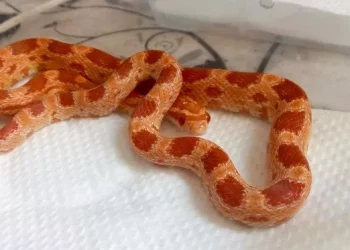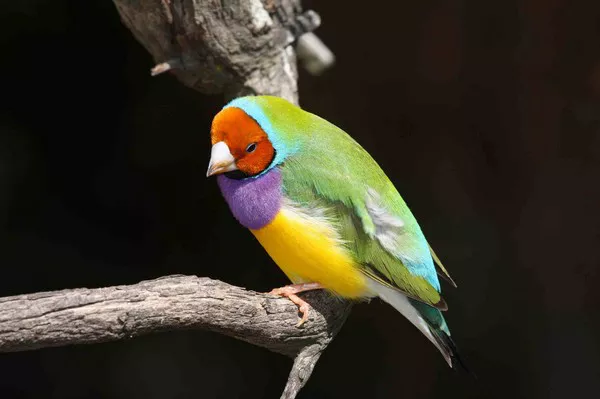The Galápagos tortoise, one of the most iconic and ancient creatures in the world, has captivated the imagination of people for centuries. These slow-moving reptiles, known for their massive size and long lifespans, have become a symbol of the unique biodiversity found in the Galápagos Islands. However, as more people become interested in keeping exotic pets, one question arises: Are Galápagos tortoises friendly?
In this article, we will explore the behavior, temperament, and characteristics of Galápagos tortoises to understand whether they can be considered friendly. We will also look into their natural habitat, their interactions with humans, and what it takes to care for these magnificent creatures. By the end of this article, you will have a clearer understanding of the temperament of Galápagos tortoises and whether they are suitable as pets.
Overview of the Galápagos Tortoise
The Galápagos tortoise is a species of giant tortoise native to the Galápagos Islands, located off the coast of Ecuador. These tortoises are part of the family Testudinidae and belong to the genus Chelonoidis. There are several subspecies of Galápagos tortoises, and they can vary slightly in appearance depending on their specific island of origin.
The Galápagos tortoise is one of the largest tortoise species in the world, with some individuals weighing over 500 pounds and measuring up to 6 feet in length. Their large, domed shells are an iconic feature, providing protection from predators. These tortoises are herbivores, feeding on a variety of plants, grasses, and fruits that grow in their environment.
In the wild, Galápagos tortoises are typically solitary creatures. They live in a range of environments across the islands, from dry, arid landscapes to lush, green highlands. Their slow movement, long lifespan (often exceeding 100 years), and gentle nature have made them a symbol of resilience and longevity.
The Natural Behavior of Galápagos Tortoises
Galápagos tortoises are not social animals in the same way that dogs or some other reptiles might be. In the wild, they tend to spend most of their time alone or in small groups, particularly when feeding or mating. While they may occasionally interact with other tortoises, their social behavior is minimal.
In their natural environment, Galápagos tortoises are primarily focused on their basic needs: finding food, avoiding predators, and reproducing. They move slowly, as their large size requires considerable energy to transport, but they are capable of covering long distances in search of food. They are also known for their impressive ability to store water, which allows them to survive in areas where fresh water is scarce.
Despite their solitary nature, Galápagos tortoises are not aggressive. In fact, they are typically calm, docile, and non-confrontational. They may react to perceived threats, but they do not typically display aggressive behaviors unless they are provoked. However, their size and strength mean that they can be dangerous if they feel threatened, so it’s important to exercise caution when interacting with them.
Are Galápagos Tortoises Friendly to Humans?
One of the most common questions asked about Galápagos tortoises is whether they are friendly to humans. While they are not known to be social animals like dogs or cats, they can form bonds with humans over time, especially in controlled environments such as wildlife sanctuaries, zoos, or even private homes. However, their idea of “friendliness” may differ from the way we typically understand the term in relation to pets.
Galápagos Tortoises in Captivity
Galápagos tortoises, when kept in captivity, can become accustomed to human presence, but they do not generally seek out human interaction. Unlike dogs, which often show excitement when their owners return home, tortoises are far less expressive in their emotions. They may tolerate being handled or may even recognize their caretakers over time, but they do not form the same kind of bond that many other pets do.
In wildlife sanctuaries and zoos, where tortoises are often observed by humans, some individuals may become accustomed to regular feeding and gentle handling. In these environments, tortoises may appear calm and unbothered by the presence of humans. Some tortoises may even allow people to approach them and pet them, especially if they associate humans with food or other positive experiences.
However, it is important to note that tortoises are not interactive creatures by nature. They do not actively seek out human attention, and forcing interaction can cause them stress. Over-handling can also lead to health problems for the tortoise, such as shell damage or dehydration.
Galápagos Tortoises as Pets
While the idea of keeping a Galápagos tortoise as a pet may seem appealing due to their slow-paced, peaceful nature, it is important to understand the complexities involved in caring for such a large, long-lived animal. Galápagos tortoises are not suitable for all households, especially as they require very specific care conditions.
To start, Galápagos tortoises are incredibly long-lived, with some individuals living for more than 100 years. This means that adopting a Galápagos tortoise is a lifelong commitment, and their care requires ongoing attention to their diet, habitat, and health needs. They also require a large outdoor space to roam and graze, as their natural environment is vast and varied.
It’s also important to consider the legal aspect of owning a Galápagos tortoise. These animals are protected by international conservation laws due to their endangered status. In many countries, it is illegal to own a Galápagos tortoise as a pet unless the individual has been legally sourced and the owner is in compliance with the necessary permits and regulations. It is crucial to ensure that the tortoise was bred in captivity and not taken from the wild, as the collection of wild tortoises can harm their population and ecosystem.
Behavior Around Humans
Although Galápagos tortoises are not typically aggressive toward humans, their behavior around humans can vary depending on individual temperament, age, and experiences. Some tortoises, especially those that have had positive interactions with humans from an early age, may become more comfortable with human presence and may even exhibit curiosity toward people.
Young tortoises are more likely to approach humans because they are more likely to associate humans with food. Adult tortoises, on the other hand, are often more cautious and less likely to initiate contact. However, even adult tortoises may become comfortable with regular, non-invasive handling over time, as long as the interaction is gentle and non-threatening.
It’s important to remember that tortoises, like all animals, have individual personalities. While some may seem more friendly and approachable, others may be more reserved or timid. It’s essential to respect a tortoise’s space and avoid forcing interaction if they seem uninterested or stressed.
Understanding the Needs of Galápagos Tortoises
If you are considering keeping a Galápagos tortoise, it is crucial to understand their specific care needs. These tortoises are not simple pets to care for, and they require a habitat that mimics their natural environment to thrive. Here are some key aspects to consider when caring for a Galápagos tortoise:
Habitat Requirements
Galápagos tortoises need a large outdoor enclosure that allows them to move around freely. They need access to grass, plants, and other natural materials to graze on. A proper enclosure should have plenty of space for the tortoise to roam and forage, as well as areas for shade and shelter to protect them from extreme temperatures.
The habitat should also include a secure fence, as tortoises are surprisingly adept at finding their way out of enclosures if there are any gaps or weak spots. A secure fence will also protect them from potential predators.
Diet and Nutrition
Galápagos tortoises are herbivores, and their diet consists mainly of grasses, leaves, and fruits. In captivity, it’s important to provide them with a variety of fresh vegetables, greens, and grasses to meet their nutritional needs. Feeding them a balanced diet ensures they stay healthy and thrive in their environment.
It’s also important to provide fresh water daily, as tortoises require hydration, particularly in warmer climates. They may not drink large amounts of water at once, but they will sip throughout the day. Some tortoises also benefit from having a shallow water dish for soaking, which helps with hydration and keeps their skin healthy.
Health Care and Lifespan
Galápagos tortoises are long-lived animals, and they require regular health checkups to ensure they remain in good condition. Like all reptiles, they are susceptible to certain health issues, including respiratory infections, shell rot, and digestive problems.
Regular checkups with a veterinarian who specializes in reptiles are essential for maintaining the health of a Galápagos tortoise. It’s also important to monitor their behavior for signs of stress or illness, such as loss of appetite, lethargy, or abnormal movement.
Socialization and Enrichment
While Galápagos tortoises are solitary by nature, they do benefit from some forms of enrichment in captivity. Providing them with varied terrain, such as rocks, logs, and plants, can help stimulate their natural foraging and climbing behaviors. Allowing them to explore their environment at their own pace can reduce stress and promote well-being.
Conclusion
In conclusion, Galápagos tortoises can be considered “friendly” to humans, but not in the same way that many other pets might be. While they are not aggressive and can become accustomed to human presence, they are not interactive or affectionate animals like dogs or cats. Their behavior tends to be calm, passive, and non-confrontational, but they do not actively seek out human companionship.
Galápagos tortoises are best suited to individuals who are prepared to provide them with the appropriate environment and care for their long lifespan. They are fascinating, low-maintenance creatures that require patience and respect for their natural behaviors. For those who appreciate their gentle nature and are willing to invest time in their care, a Galápagos tortoise can be a rewarding, if non-traditional, companion.
If you’re considering adopting a Galápagos tortoise, ensure that you understand the legal, ethical, and practical responsibilities involved. By providing a suitable habitat and understanding their temperament, you can enjoy the company of these magnificent reptiles and contribute to their conservation.
Related Topics:






















